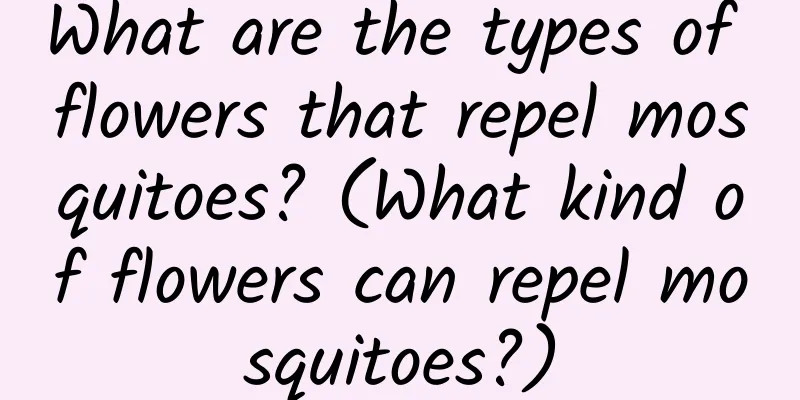Is the survival rate of Kalanchoe cuttings high? (Kalanchoe cuttings methods, time and precautions)

|
When propagating Kalanchoe by cuttings, the survival rate is highest in spring or autumn . In fact, cutting propagation is to use the regeneration ability of the roots, stems, leaves and buds of plants to make them take root and sprout to form new plants under appropriate temperature and humidity conditions. There are mainly stem cuttings, leaf cuttings, leaf bud cuttings and root cuttings. Methods and precautions to improve the survival rate of cuttingsFrom a botanical point of view, cutting propagation seedlings maintain the original good genes of the plant and reproduce faster. However, in the actual operation process, due to the influence of various environmental factors, the survival rate of cutting seedlings is not always very high. Therefore, in order to improve the survival rate of cuttings, we must pay attention to the following five important links. ( 1) Select appropriate cuttingsWhen propagating Kalanchoe by cuttings, you should choose branches or leaves that are either current year or one year old, growing healthily and rich in nutrients as cuttings. It is advisable to have a small amount of leaves to facilitate its photosynthesis and provide corresponding nutrient support for rooting and germination. When cutting branches, three buds should be retained, with the upper end 0.3~0.5 cm away from the bud point and the slope angle being 45°; the lower end should be close to the bud point and the slope should also be 45°; the lower end should not be too far from the bud point, so as to facilitate rapid rooting. (2) Temperature for rooting and germinationThe rooting and germination of cuttings require suitable temperatures. Generally, in mid-to-late April in spring, when the soil temperature rises, cuttings can greatly increase the survival rate. The optimum temperature is around 20~28°C. You can also take the approach of raising the temperature, that is, cover the cuttings with a protective plastic film or a transparent glass sheet, and use the warming effect of sunlight to increase the temperature of the substrate. (3) Maintain appropriate humidityMaintaining moist soil and 70% to 80% air humidity is extremely important for the survival of cuttings, because after the branches are cut, they will germinate first and then take root. Therefore, there must be sufficient moisture in the loam so that it can be absorbed through wounds and callus tissue, but the soil must not be too wet or waterlogged, otherwise the cuttings will easily rot. In order to maintain the moisture of loam and air, ground film covering is often used, and spraying is adopted to increase the humidity of the internal microenvironment to facilitate rooting and germination. (4) Provide adequate oxygenThe rooting process of plants is a concrete manifestation of vigorous respiration, and the amount of oxygen in the soil is one of the important conditions for rooting. Therefore, under normal circumstances, sandy loam is suitable for dormant cuttings, and ridge planting is preferred. Watering should be done between high ridges to allow moisture to penetrate into the loam around the cuttings instead of watering directly on the cuttings. For cuttings with leaves, it is better to use plain sand as the substrate, which can ensure that the sand has good air permeability, which is more conducive to rooting and the survival rate will be higher. (5) Provide appropriate lightingAfter the cuttings are cut, the underground roots do not need light to germinate and grow, and the sand bed should be placed in a diffuse light location. However, the aboveground part still needs light, as long as the leaves of the aboveground part do not wilt and proper light is given, it will be beneficial for its rooting and germination. |
Recommend
What is the reason for the water content of succulents and how to remedy it
1. Drain water in time The main reason for succul...
The breeding methods and precautions of butterfly flowers
Reproduction method 1. Planting It is best to sow...
When is the best time to prune Hibiscus?
Hibiscus pruning effect When planting many plants...
The efficacy and function of licorice
Cough Most licorice roots are made into small tab...
How to take care of the peace tree best
Peace tree growing conditions The peace lily like...
Pests and control methods of dogtooth flower
Pests of dogtooth flower: aphids symptom Aphids a...
The difference between kudzu and kudzu
1. Difference of blades The terminal leaflets of ...
What to do if the camellia buds don’t bloom
1. Increase the temperature Reason: Camellia buds...
How does Areca palm survive the winter?
How to survive the winter temperature Areca palm ...
How to propagate Anthurium
Propagation by division Division propagation is a...
How to propagate daffodils
Propagation of daffodils by dividing bulbs The bu...
How to grow rainbow jade in summer
1. Key points for early summer maintenance temper...
How to make aloe vera bloom
1. The habit of this plant Only if we first under...
How to grow Margarite flowers in summer
1. Loosening the soil In the summer, you need to ...
When is the right time to repot Kalanchoe?
Changing pot time of Kalanchoe Generally speaking...









